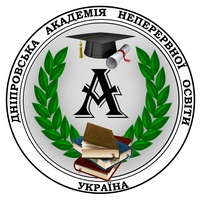ASSESSMENT AND EVALUATION IN HIGHER EDUCATION QUALITY MANAGEMENT
Abstract
The process of education quality management in combination with evaluation and analytical activity is considered in this research as an activity to implement the goals and coordinate the activities of all components of the
educational system, its subjects and achievement of the planned results based on management decisions, the validity and predictability of which enhance the evaluation and analytical activity. Objective assessments of learning outcomes based on the theory of pedagogical measurements have a priority role in providing information base for evaluation and analytical activities in education quality management. These measurements should be the basis for recognition, analysis, functioning, development, forecasting and improvement of education quality management systems. A systematic and prioritised approach to quality management should be developed at different levels, from the macro level to the quality management of the individual educational organisation. A sound use of information in education quality management requires the construction of a hierarchy and interconnection of information flows. This systematic approach should be comprehensive, combining dynamic, comparative, differentiating and predictive analysis of assessment-analytical data. When carrying out assessment-analytical activities based on measurement results in education quality management, a set of scientific requirements for information base characteristics should be taken into account, contextual factors in the analysis and interpretation of measurement data should be taken into account. The requirements primarily include the use of measurement models and design, high reliability and validity of the results of assessment and evaluation activities, extensive use of dynamic approach to assessment of learning quality and ensuring compatibility of assessment and evaluation results, the use of balanced indicators of educational quality, operable in measurement. A system of balanced indicators of the quality of learning achievements, structured according to the levels of education quality management, is presented.
References
2. Kaplan R. S., Norton D. P. (2006) Sbalansyrovannaia systema pokazatelei, ot stratehyy k deistvyiu [Balanced scorecard, from strategy to action]. Moscow: ZAO «Olymp ‒ Byznes» [in Russian].
3. Spenser, L. M. (2005) Kompetentsyy na rabote [Competences at work]. Moscow: HIPPO [in Russian].
4. Terovanesov M. R. (2014) Systema upravlinnia yakistiu vyshchoi osvity [Quality management system of higher education]. Ekonomichnyi analiz: zb. nauk. prats. Ternopil: Vydavnycho-polihrafichnyi tsentr Ternopilskoho natsionalnoho ekonomichnoho universytetu “Ekonomichna dumka”. 1, 93–98. [in Ukrainian].
5. Khan Ye. (2017) Uchast Ukrainy u Bolonskomu protsesi: 12 rokiv na shliakhu do Yevropeiskoho osvitnoho prostoru [Ukraineʼs participation in the Bologna Process: 12 years on the road to the European Education Area]. Retrieved from http://eustudies.history.knu.ua/uk/yevgen-han-uchast-ukrayiny-u-bolonskomu-protsesi-12-rokiv-na-shlyahu-do-yevropejskogo-istorychnogo-prostoru/ (accessed: 10.07.2022) [in Ukrainian].
6. Khliebnikova T. M. (2010) Kvalimetrychnyi pidkhid do vyvchennia yakosti vyshchoi osvity [Qualimetric approach to studying the quality of higher education]. Retrieved from http://umo.edu.ua/images/content/nashi_vydanya/metod_upr_osvit/v_5/26.pdf [in Ukrainian].
7. Chyrva H. M. (2019) Osvitnii monitorynh yak instrument derzhavnoho upravlinnia yakistiu vyshchoi osvity [Educational monitoring as a tool for public management of higher education quality]. Retrieved from http://www.pdu-journal.kpu.zp.ua/archive/1_2019/tom_2/21.pdf (accessed: 10.07.2022) [in Ukrainian].
8. Shchudlo S. (2012) Vyshcha osvita u poshuku yakosti : quo vadis [Higher education in search of quality: quo vadis]. Kharkiv – Drohobych: Kolo [in Ukrainian].
9. Ashworth, A. and Harvey R. Assessing (1994) Quality in Further and Higher Education. London: Jessica Kingsley Publishers.
10. Hambleton R., Swaminathan, H, Rogers H. (1991) Fundamentals of Item Response Theory. N-Y.: SAGE Publications.
11. Lindstrom, M., & Bates, D. (1989). Newton-Raphson and EM algorithms for linear mixed-effects models for repeated measures data. Journal of the American Statistical Association.
12. Aline G. Sayer, Linda M. Collins (2002) New methods for the analysis of change. – 2st ed. American Psychological Association.

 ISSN
ISSN  ISSN
ISSN 

